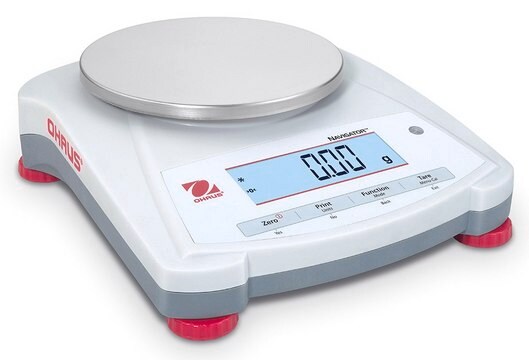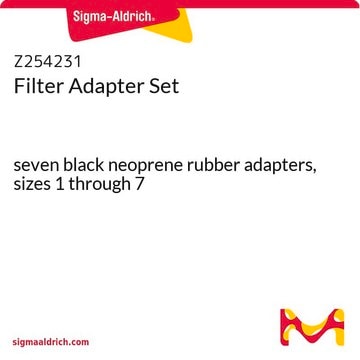一般說明
We are committed to bringing you greener alternative products, which adhere to one or more of The 12 Principles of Green Chemistry. This antibody is Preservative-free, produced without the harm or sacrifice of animals and exceptionally stable to allow for ambient shipping and storage if needed and thus aligns with "Waste Prevention", "Designing Safer Chemicals" and "Design for Energy Efficiency".
Click here for more information.
ZooMAb® antibodies represent an entirely new generation of recombinant monoclonal antibodies. Each ZooMAb® antibody is manufactured using our proprietary recombinant expression system, purified to homogeneity, and precisely dispensed to produce robust and highly reproducible lot-to-lot consistency. Only top-performing clones are released for use by researchers. Each antibody is validated for high specificity and affinity across multiple applications, including its most commonly used application. ZooMAb® antibodies are reliably available and ready to ship when you need them.
應用
Quality Control Testing
Evaluated by Western Blotting in acid extract of HeLa cells treated with sodium butyrate.
Western Blotting Analysis: A 1:1,000 dilution of this antibody detected Acetyl-Histone H3 (Lys27) in acid extract of HeLa cells treated with sodium butyrate (5 mM, 24 h).
Tested Applications
Western Blotting Analysis: A 1:1,000 dilution from a representative lot detected Acetyl-Histone H3 (Lys27) in HeLa treated with Trichostain A (TSA; 400 ng/ml; 12 h).
Immunocytochemistry Analysis: A 1:1,000 dilution from a representative lot detected Acetyl-Histone H3 (Lys27) in HeLa cells treated with Trichostatin A (TSA; 400 nM; 18 h).
Peptide Inhibition Assay: Target band detection in a lysate from HeLa cells treated with Trichostatin A (TSA; 400 ng/mL; 12 h) was prevented by preblocking of a representative lot with the immunogen acetylated peptide, but not the corresponding non-acetylated peptide.
Affinity Binding Assay: A representative lot of this antibody bound in Acetyl Histone H3 (Lys27) peptide with a KD of 1.5 x 10-7 in an affinity binding assay.
Note: Actual optimal working dilutions must be determined by end user as specimens, and experimental conditions may vary with the end user.
標靶描述
Histone H3.1 (UniProt: P68431; also known as Histone H3/a, Histone H3/b, Histone H3/c, Histone H3/d, Histone H3/f, Histone H3/h, Histone H3/I, Histone H3/j, Histone H3/k, Histone H3/l) is encoded by the HIST1H3A (also known as H3FA, HIST1H3B, H3FL, HIST1H3C, H3FC, HIST1H3D, H3FB, HISTH3F, H3FD, HIST1H3F, H3FI, HIST1H3G, H3FH, HIST1H3H, H3FK, HIST1H3I, H3FF, HIST1H3J, H3FJ) gene (Gene ID: 8350, 8351, 8352, 8354, 8355, 8356, 8357, 8358, 8968) in human. Histone H3 has two main variants, H3.1 and H3.3, which show different genomic localization patterns in animals. The H3.1 and H3.3 complexes also possess distinct histone chaperones, CAF-1 and HIRA, which play important role in mediating DNA-synthesis-dependent and -independent nucleosome assembly. Histone H3.1 serves as the canonical histone, which is incorporated during DNA replication, whereas H3.3 acts as the replacement histone that can be incorporated outside of S-phase during chromatin-disrupting processes like transcription. Histone H 3.1 is a core component of nucleosome that is present only in mammals. Histone H3 features a main globular domain and a long N-terminal tail, which protrudes from the globular nucleosome core and can undergo several different types of epigenetic modifications that influence cellular processes. The amino-terminal tails of histone proteins are subject to several posttranslational modifications, including acetylation, methylation, and phosphorylation, which recruit downstream regulatory factors, influence chromatin structure, and are critical determinants of transcription. These modifications on histones, known as histone acyl marks, are involved in transcription regulation. Histone acetylation is generally linked to gene activation and H3K27ac is well recognized as a marker for active enhancers and a great indicator of enhancer activity. H3K27ac also plays an active role in cell identity control. This ZooMAb® recombinant monoclonal antibody, generated by our propriety technology, offers significantly enhanced specificity, affinity, reproducibility, and stability over conventional monoclonals. (Ref.: Zhang, T., et al. (2020). Genome Biol. 21; Article 45; Black, JC., et al. (2012). Mol Cell. 48(4); 491-507; Stroud, H., et al (2012). Proc. Natl. Acad. Sci. USA 109(14); 5370-5375).
外觀
Purified recombinant rabbit monoclonal antibody IgG, lyophilized in PBS with 5% Trehalose, normal appearance a coarse or translucent resin. The PBS/trehalose components in the ZooMAb formulation can have the appearance of a semi-solid (bead like gel) after lyophilization. This is a normal phenomenon. Please follow the recommended reconstitution procedure in the data sheet to dissolve the semi-solid, bead-like, gel-appearing material. The resulting antibody solution is completely stable and functional as proven by full functional testing. Contains no biocide or preservatives, such as azide, or any animal by-products. Larger pack sizes provided as multiples of 25 µL.
免責聲明
Unless otherwise stated in our catalog or other company documentation accompanying the product(s), our products are intended for research use only and are not to be used for any other purpose, which includes but is not limited to, unauthorized commercial uses, in vitro diagnostic uses, ex vivo or in vivo therapeutic uses or any type of consumption or application to humans or animals.










